BACKGROUND/CONTEXT
I'm a licensed radio amateur who has operated on VHF/UHF and HF/MF, and I own several radios capable of VHF/UHF: an all-band-all-mode portable, and several handheld ("handy talkie") radios.
The others include a TYT and a Wouxun, both of which are decent but have some rather outsize quirks that make them problematic. The TYT does well but is VERY basic, with limited ability to customize, and a power/volume knob that is so delicate that looking at it wrong results in audio being turned WAY up or down. Regardless: it's a decent radio with good send, receive, and audio. Twitchy power/volume dial aside, my biggest complaint is it's more expensive than I'd expect given how basic it is - if nothing else, the UI (which costs nothing to fix) isn't particularly user-friendly.
The Wouxun is more full-featured than the TYT and other budget radios, with the ability to configure almost every button and setting, and the knobs on top have enough resistance to not easily be bumped accidentally. HOWEVER, at least with the unit I have, it is susceptible to inter-modulation - the radio picks up stations (usually repeaters) that it's not tuned to, particularly when using an external antenna with higher gain than the stock rubber-ducky. Given the price of the Wouxun approaches that of mainstream, big brand radios ($$$) it doesn't offer not good value and I wouldn't recommend it.
[Talkpod A36Plus Max 8W]
THIS radio is eerily good, especially given the budget pricing that undercuts not only big-brands but approaches their feature-sets.
[GOOD]
INCLUDED IN THE BOX: you get a LOT for your money with this package. Radio aside, you get a high capacity battery, a fairly standard "rubber duck" antenna, a very short (about 1.5 inch) antenna labeled "Talkpod Ham 805 UHF/VHF", and an extra, super-long flexible whip labelled "Talkpod Ham 771 UHF/VHF". Additionally, there's a lanyard, battery belt clip, USB charger and cable, and a USB-A to Kenwood jack style programming cable.
PROGRAMMING: on the programming cable front, despite some criticisms I'd read online, the included USB-to-Kenwood style cable *is* CHIRP-Next compatible - no need for sketchy software downloads! Furthermore, it is FAST to program this radio. With some others like the TYT and Wouxun, programming is excruciatingly slow. (realistically, maybe 30 seconds) A full read or write of the Talkpod A36 Plus takes 6-seconds from "upload to radio" to radio rebooting and ready to use. With that speed, you can experiment with settings and not spend your time waiting for the radio to update.
Further, while CHIRP is faster, you CAN program frequencies, channels, CTCSS tones, offsets (everything) right on the radio with minimal fuss - the full, direct-entry keypad makes short work of that.
AVAILABLE BANDS: It's quite shocking just what this radio can do. So much so, I expect it won't be available for long in the Canadian market as a number of these of the selectable bands are NOT certified for use in this country. Regardless, out of the box, the radio will transmit on VHF/UHF amateur bands, FRS/GMRS including repeaters (which are not licensed in Canada), SRR ("Short Range Radio", typically found in South Asia) Channels 1-13 from 350.2250 to 350.4000MHz, MURS ("Multi-Use Radio Service") Channels from 151.82000 to 154.600MHz, and receive on "just about everything," including AM air-bands. I've tested this with local IFR departure and arrival, as well as VHF corridor frequencies and the radio receives and decodes AM perfectly well, unlike some budget amateur handhelds that muddle through this. Frankly, this radio is cheaper and more user-friendly than a lot of air-band scanners. But, please, don't use the uncertified channels - that's a great way to get unwanted attention from The Man and have your toys taken away.
CONTROLS: generally feel quite good. The knob on top (for power and volume) has enough friction to resist accidental bumps. (similar to the Wouxun there) The front buttons are rubbery and have a nice "click" to them when engaged.
Top and side buttons can be reconfigured for selection functions apart from the defaults. My suggestions: reconfigure the top button from NOAA/Environment Canada weather to DTMF tone entry. (you can program Wx channels into memory slots to free up the button) Reconfigure the side buttons: PF2 Key (Short Press) to "TX Power Level"; PF2 Key (Long Press) to "Search"; PF3 Key (Short Press) to "REMOTE" Scan. NOTE: a Long Press of PF3 is NOT reconfigurable: it will always open the squelch on the active channel until released.
BATTERY/CHARGING: the battery is a chonker with a USB-C at the base to charge in-field (note: not PD - make sure you have a USB-A to USB-C type that delivers 5V). Further, the included charging cradle is convenient for base station use. (see the next section for a caveat)
BANDS: This almost deserves a whole section of its own since it either makes the radio something really interesting or one you shouldn't touch with a barge pole. NOTE: I have a dummy load for testing so I was able to check what bands the radio transmits in without actually putting a signal out. First off: this radio will transmit on standard amateur (ham) VHF, UHF, and 220MHz bands. Further, it will transmit on UHF FRS/GMRS frequencies, and something labelled "350MHz". Yeah, I had to look that last one up. Apparently it's allocated (in some regions) to family radios, limited to under 2Watts. Well, I'm not sure it's allocated at all in Canada and the radio seems to be happy transmitting at high power so you'd want to be very careful if you have these frequencies on your VFO. Further, GMRS isn't a thing in Canada, only FRS, and only in radios with permanently affixed antennas where this unit has removable antennas. (I suppose to prevent people from putting a beam antenna on an FRS radio, which is supposed to be reserved for low-power, local-only family comms, not long distance "DX" work) With the caveat out of the way...
AMATEUR BAND RECEIVE AND TRANSMIT: I've tested use on several amateur repeaters in the region, both with the included rubber duck antenna, and an external, dual 2m/70cm band SlimJIM J-Pole, and it does at least as well as any other radio I own. Signal reports are very good to excellent, in line with other quality handhelds.
SCAN/SEARCH: you can program buttons of choice to active either "SCAN" (through designed saved memory slots) or "SEARCH". The latter will search a designated band for active transmissions. The implementation is a bit confusing: it starts in "UHF SEARCH". Buried in the online manual there's a reference to how to change this: press the green "MENU" button while in an active search. This results in switching bands as follows: UHF->VHF->220->350 (???) -> back to UHF. (see the next section)
[MIXED/BAD]
DOCUMENTATION: Horrible terrible no good very bad. Throw the paper quick-start that came with the right in the trash - all of the functions have changed in some intervening firmware update. Go online and find the latest PDF manual at the manufacturer's website and download it. Even still, the manual is mediocre but at least PDF readers have "find" functions so you can track down functions by name. Big problems are the menu functions aren't all well documented and some are out of order, not lining up with which menu item number they are on the radio. That said: once you get used to most of the functions (spend an evening getting to know the radio) you won't need the manual much.
CONTROLS: the UP/DOWN controls function BACKWARD from what you'd expect. Press the "DOWN" key, you'd expect the memory to "go down the list" from, say, slot 1, to slot 2. NOPE! Pressing DOWN goes "UP" like it's "lowering the number". I don't think I have any other piece of electronics that operates this way. Unless I've missed something in the documentation about reversing these controls (possible, given how bad the manual is), you're stuck with this. You can, however, manually key numbers in with the full keypad, so that mitigates this somewhat.
ANTENNA CONNECTOR: OK, this is more of a pet-peev but the connector on the radio is a slightly recessed SMA-male. Boo, hiss. I don't like this for a few reasons. First off: putting the "pin" on the radio means if it gets bend or broken, the radio's junk - I'd prefer to see SMA-female on the radio. Regardless, all my radios have SMA to BNC adaptors semi-permanently installed anyway since it makes swapping antenna easier so I'll call this a preference not a red flag.
MAIN PTT BUTTON: it is VERY easy to bump the PTT,, and seems to be made of a harder plastic instead of the rubber of the others. There's a setting in the radio for "PTT delay" which I'd never seen on other radios and I suspect this was added to address accidental bumps. Regardless, this isn't a big deal.
MEMORY BANK: All channels are in one giant bank - you can't subdivide it like top tier radios from Icom and so forth. It's a minor gripe as this is par for the course with budget radios.
SCAN: Slow. That's it, that's my criticism. Small mitigating factor: you can use CHIRP to set "skip" designated channels. Since everything is stored in one big memory bank, this helps cut down the time it takes to go through a channel scan.
BUTTON PROGRAMMING: there are limits to what you can assign to the buttons. Not a deal-breaker but a bit of a shame you don't have full discretion to change button function.
CHARGING CRADLE: minor but persistent gripe is the cradle is VERY difficult to get the radio into. There are small channels on the sides that mate with slots on the battery and they have VERY tight tolerances. You'll have to hold both the radio and base to get them together and the easily-bumped main PTT means you'll likely be hitting that if the radio is on and you're not very careful. I do wonder if this would be an issue with the smaller battery that's included with some of the kits.
DISPLAY: while clear - does NOT display a lot of info on memory channels - I seem to get a max of 7 characters. (e.g. "VE3ABCD") - that's it. Very annoying when trying to label memory channels for things like repeaters where you might have a VHF channel and UHF for the same repeater. It helps to group memory channels (since you can't create separate banks) - say, local VHF in slots 1-10, VHF-UHF repeaters in slots 20-40, maybe 220MHz in 50-70 etc. The radio just skips blank channels so there's no time lost scrolling through.
SYSTEM ON A CHIP/HOMODYNE: This is not a SuperHET (Superheterodyne) transceiver. Rather, it's a "system on a chip" (SoC) design. The advantage is it's cheap to produce and works on a vast range of bands and even received AM air-band. The disadvantage is it isn't as sensitive or selective as a superhet design: you are more likely to receive interference from a strong, nearby AM broadcast (or really any) station, and likely won't be able to pull super weak signals out of the weeds. Another quirk: with the antenna disconnected but the radio sitting in its charging cradle, it still receives signals, suggesting a lack of isolation between parts of the radio - probably par for the course with an SoC design.
SUMMARY
This is a solid "cheapie" radio. Other people have tested this exact model using Spectrum Analyzers and found it tends to be "clean", without bad spurious emissions. I haven't had a chance to put mine on an analyzer yet but it's on my to-do for a future club meet and this review will be updated with results.
I'm torn. On the face of it, I'd like to give this 5-stars for being amazing value in a radio - 8-Watts, three antennas, a fat battery with USB-C port for field charging, charging cradle for home, and what appears to be an FTDI (or at least "CHIRP compatible") programming cable - the latter aren't cheap! Some of the the UI quirks mean it's not a PERFECT radio. However, 5-stars doesn't mean perfect to me - it means "excellent", which is a fair rating for this radio. (pending testing on a spectrum analyzer at least) Further, given the price-point, I doubt you'd find anything that comes close to the versatility. The Talkpod A36 Plus Max 8W gets a full 5-stars from me, provided you temper your expectations on performance.
I'm a licensed radio amateur who has operated on VHF/UHF and HF/MF, and I own several radios capable of VHF/UHF: an all-band-all-mode portable, and several handheld ("handy talkie") radios.
The others include a TYT and a Wouxun, both of which are decent but have some rather outsize quirks that make them problematic. The TYT does well but is VERY basic, with limited ability to customize, and a power/volume knob that is so delicate that looking at it wrong results in audio being turned WAY up or down. Regardless: it's a decent radio with good send, receive, and audio. Twitchy power/volume dial aside, my biggest complaint is it's more expensive than I'd expect given how basic it is - if nothing else, the UI (which costs nothing to fix) isn't particularly user-friendly.
The Wouxun is more full-featured than the TYT and other budget radios, with the ability to configure almost every button and setting, and the knobs on top have enough resistance to not easily be bumped accidentally. HOWEVER, at least with the unit I have, it is susceptible to inter-modulation - the radio picks up stations (usually repeaters) that it's not tuned to, particularly when using an external antenna with higher gain than the stock rubber-ducky. Given the price of the Wouxun approaches that of mainstream, big brand radios ($$$) it doesn't offer not good value and I wouldn't recommend it.
[Talkpod A36Plus Max 8W]
THIS radio is eerily good, especially given the budget pricing that undercuts not only big-brands but approaches their feature-sets.
[GOOD]
INCLUDED IN THE BOX: you get a LOT for your money with this package. Radio aside, you get a high capacity battery, a fairly standard "rubber duck" antenna, a very short (about 1.5 inch) antenna labeled "Talkpod Ham 805 UHF/VHF", and an extra, super-long flexible whip labelled "Talkpod Ham 771 UHF/VHF". Additionally, there's a lanyard, battery belt clip, USB charger and cable, and a USB-A to Kenwood jack style programming cable.
PROGRAMMING: on the programming cable front, despite some criticisms I'd read online, the included USB-to-Kenwood style cable *is* CHIRP-Next compatible - no need for sketchy software downloads! Furthermore, it is FAST to program this radio. With some others like the TYT and Wouxun, programming is excruciatingly slow. (realistically, maybe 30 seconds) A full read or write of the Talkpod A36 Plus takes 6-seconds from "upload to radio" to radio rebooting and ready to use. With that speed, you can experiment with settings and not spend your time waiting for the radio to update.
Further, while CHIRP is faster, you CAN program frequencies, channels, CTCSS tones, offsets (everything) right on the radio with minimal fuss - the full, direct-entry keypad makes short work of that.
AVAILABLE BANDS: It's quite shocking just what this radio can do. So much so, I expect it won't be available for long in the Canadian market as a number of these of the selectable bands are NOT certified for use in this country. Regardless, out of the box, the radio will transmit on VHF/UHF amateur bands, FRS/GMRS including repeaters (which are not licensed in Canada), SRR ("Short Range Radio", typically found in South Asia) Channels 1-13 from 350.2250 to 350.4000MHz, MURS ("Multi-Use Radio Service") Channels from 151.82000 to 154.600MHz, and receive on "just about everything," including AM air-bands. I've tested this with local IFR departure and arrival, as well as VHF corridor frequencies and the radio receives and decodes AM perfectly well, unlike some budget amateur handhelds that muddle through this. Frankly, this radio is cheaper and more user-friendly than a lot of air-band scanners. But, please, don't use the uncertified channels - that's a great way to get unwanted attention from The Man and have your toys taken away.
CONTROLS: generally feel quite good. The knob on top (for power and volume) has enough friction to resist accidental bumps. (similar to the Wouxun there) The front buttons are rubbery and have a nice "click" to them when engaged.
Top and side buttons can be reconfigured for selection functions apart from the defaults. My suggestions: reconfigure the top button from NOAA/Environment Canada weather to DTMF tone entry. (you can program Wx channels into memory slots to free up the button) Reconfigure the side buttons: PF2 Key (Short Press) to "TX Power Level"; PF2 Key (Long Press) to "Search"; PF3 Key (Short Press) to "REMOTE" Scan. NOTE: a Long Press of PF3 is NOT reconfigurable: it will always open the squelch on the active channel until released.
BATTERY/CHARGING: the battery is a chonker with a USB-C at the base to charge in-field (note: not PD - make sure you have a USB-A to USB-C type that delivers 5V). Further, the included charging cradle is convenient for base station use. (see the next section for a caveat)
BANDS: This almost deserves a whole section of its own since it either makes the radio something really interesting or one you shouldn't touch with a barge pole. NOTE: I have a dummy load for testing so I was able to check what bands the radio transmits in without actually putting a signal out. First off: this radio will transmit on standard amateur (ham) VHF, UHF, and 220MHz bands. Further, it will transmit on UHF FRS/GMRS frequencies, and something labelled "350MHz". Yeah, I had to look that last one up. Apparently it's allocated (in some regions) to family radios, limited to under 2Watts. Well, I'm not sure it's allocated at all in Canada and the radio seems to be happy transmitting at high power so you'd want to be very careful if you have these frequencies on your VFO. Further, GMRS isn't a thing in Canada, only FRS, and only in radios with permanently affixed antennas where this unit has removable antennas. (I suppose to prevent people from putting a beam antenna on an FRS radio, which is supposed to be reserved for low-power, local-only family comms, not long distance "DX" work) With the caveat out of the way...
AMATEUR BAND RECEIVE AND TRANSMIT: I've tested use on several amateur repeaters in the region, both with the included rubber duck antenna, and an external, dual 2m/70cm band SlimJIM J-Pole, and it does at least as well as any other radio I own. Signal reports are very good to excellent, in line with other quality handhelds.
SCAN/SEARCH: you can program buttons of choice to active either "SCAN" (through designed saved memory slots) or "SEARCH". The latter will search a designated band for active transmissions. The implementation is a bit confusing: it starts in "UHF SEARCH". Buried in the online manual there's a reference to how to change this: press the green "MENU" button while in an active search. This results in switching bands as follows: UHF->VHF->220->350 (???) -> back to UHF. (see the next section)
[MIXED/BAD]
DOCUMENTATION: Horrible terrible no good very bad. Throw the paper quick-start that came with the right in the trash - all of the functions have changed in some intervening firmware update. Go online and find the latest PDF manual at the manufacturer's website and download it. Even still, the manual is mediocre but at least PDF readers have "find" functions so you can track down functions by name. Big problems are the menu functions aren't all well documented and some are out of order, not lining up with which menu item number they are on the radio. That said: once you get used to most of the functions (spend an evening getting to know the radio) you won't need the manual much.
CONTROLS: the UP/DOWN controls function BACKWARD from what you'd expect. Press the "DOWN" key, you'd expect the memory to "go down the list" from, say, slot 1, to slot 2. NOPE! Pressing DOWN goes "UP" like it's "lowering the number". I don't think I have any other piece of electronics that operates this way. Unless I've missed something in the documentation about reversing these controls (possible, given how bad the manual is), you're stuck with this. You can, however, manually key numbers in with the full keypad, so that mitigates this somewhat.
ANTENNA CONNECTOR: OK, this is more of a pet-peev but the connector on the radio is a slightly recessed SMA-male. Boo, hiss. I don't like this for a few reasons. First off: putting the "pin" on the radio means if it gets bend or broken, the radio's junk - I'd prefer to see SMA-female on the radio. Regardless, all my radios have SMA to BNC adaptors semi-permanently installed anyway since it makes swapping antenna easier so I'll call this a preference not a red flag.
MAIN PTT BUTTON: it is VERY easy to bump the PTT,, and seems to be made of a harder plastic instead of the rubber of the others. There's a setting in the radio for "PTT delay" which I'd never seen on other radios and I suspect this was added to address accidental bumps. Regardless, this isn't a big deal.
MEMORY BANK: All channels are in one giant bank - you can't subdivide it like top tier radios from Icom and so forth. It's a minor gripe as this is par for the course with budget radios.
SCAN: Slow. That's it, that's my criticism. Small mitigating factor: you can use CHIRP to set "skip" designated channels. Since everything is stored in one big memory bank, this helps cut down the time it takes to go through a channel scan.
BUTTON PROGRAMMING: there are limits to what you can assign to the buttons. Not a deal-breaker but a bit of a shame you don't have full discretion to change button function.
CHARGING CRADLE: minor but persistent gripe is the cradle is VERY difficult to get the radio into. There are small channels on the sides that mate with slots on the battery and they have VERY tight tolerances. You'll have to hold both the radio and base to get them together and the easily-bumped main PTT means you'll likely be hitting that if the radio is on and you're not very careful. I do wonder if this would be an issue with the smaller battery that's included with some of the kits.
DISPLAY: while clear - does NOT display a lot of info on memory channels - I seem to get a max of 7 characters. (e.g. "VE3ABCD") - that's it. Very annoying when trying to label memory channels for things like repeaters where you might have a VHF channel and UHF for the same repeater. It helps to group memory channels (since you can't create separate banks) - say, local VHF in slots 1-10, VHF-UHF repeaters in slots 20-40, maybe 220MHz in 50-70 etc. The radio just skips blank channels so there's no time lost scrolling through.
SYSTEM ON A CHIP/HOMODYNE: This is not a SuperHET (Superheterodyne) transceiver. Rather, it's a "system on a chip" (SoC) design. The advantage is it's cheap to produce and works on a vast range of bands and even received AM air-band. The disadvantage is it isn't as sensitive or selective as a superhet design: you are more likely to receive interference from a strong, nearby AM broadcast (or really any) station, and likely won't be able to pull super weak signals out of the weeds. Another quirk: with the antenna disconnected but the radio sitting in its charging cradle, it still receives signals, suggesting a lack of isolation between parts of the radio - probably par for the course with an SoC design.
SUMMARY
This is a solid "cheapie" radio. Other people have tested this exact model using Spectrum Analyzers and found it tends to be "clean", without bad spurious emissions. I haven't had a chance to put mine on an analyzer yet but it's on my to-do for a future club meet and this review will be updated with results.
I'm torn. On the face of it, I'd like to give this 5-stars for being amazing value in a radio - 8-Watts, three antennas, a fat battery with USB-C port for field charging, charging cradle for home, and what appears to be an FTDI (or at least "CHIRP compatible") programming cable - the latter aren't cheap! Some of the the UI quirks mean it's not a PERFECT radio. However, 5-stars doesn't mean perfect to me - it means "excellent", which is a fair rating for this radio. (pending testing on a spectrum analyzer at least) Further, given the price-point, I doubt you'd find anything that comes close to the versatility. The Talkpod A36 Plus Max 8W gets a full 5-stars from me, provided you temper your expectations on performance.


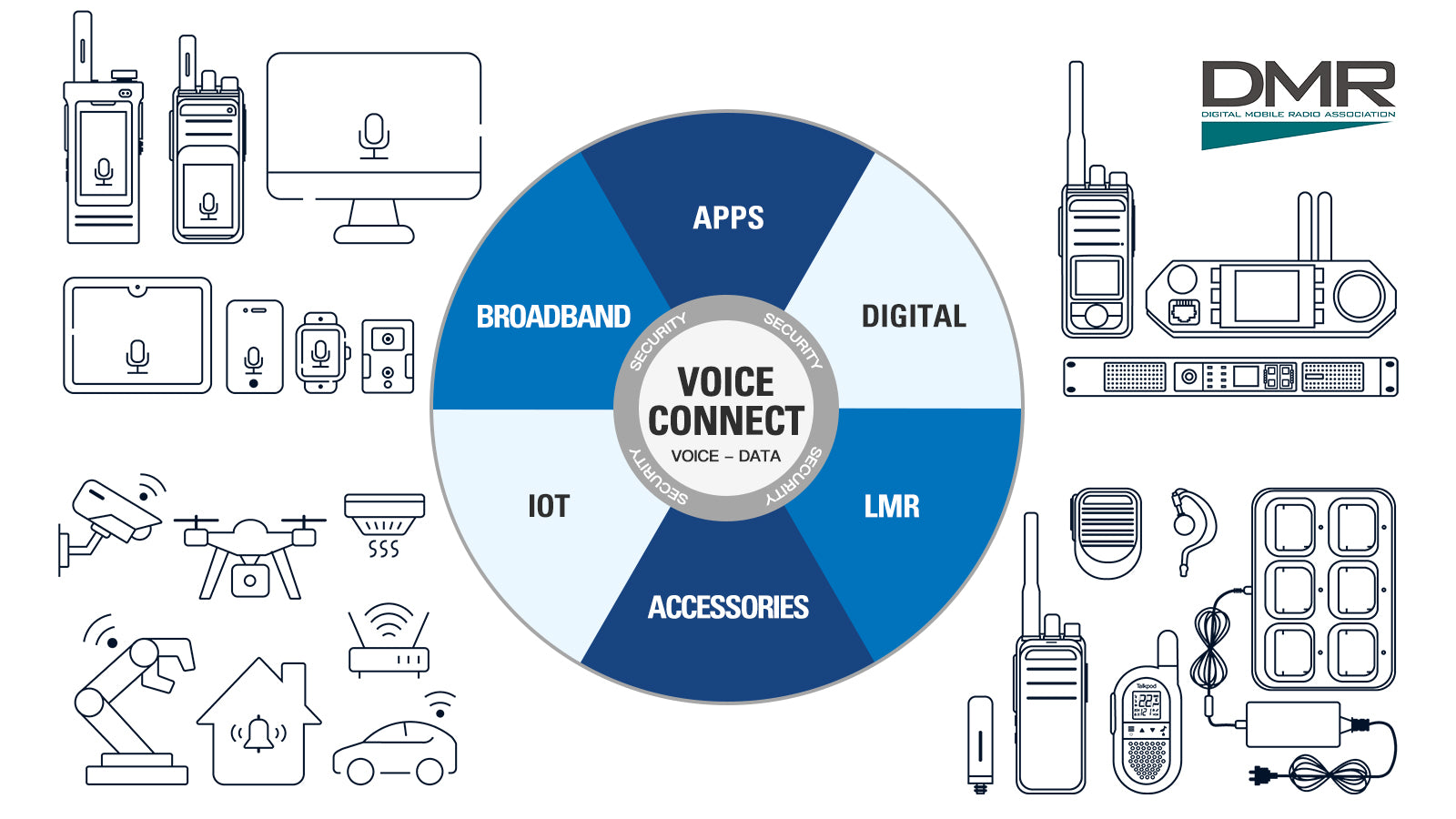


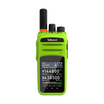
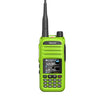
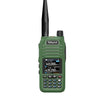
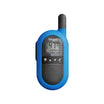
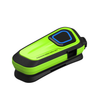
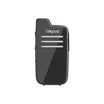
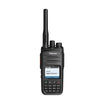
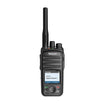
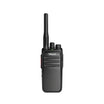
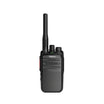
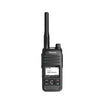
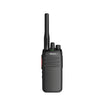
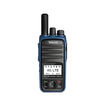

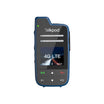
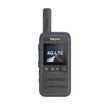
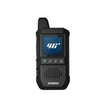
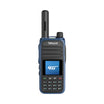
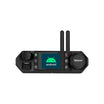
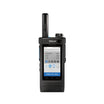
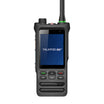
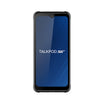
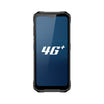
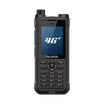
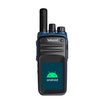
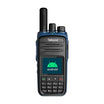
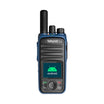
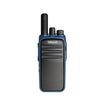
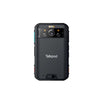
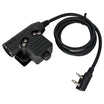
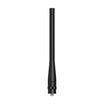
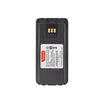
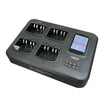
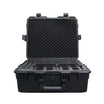
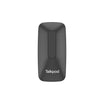
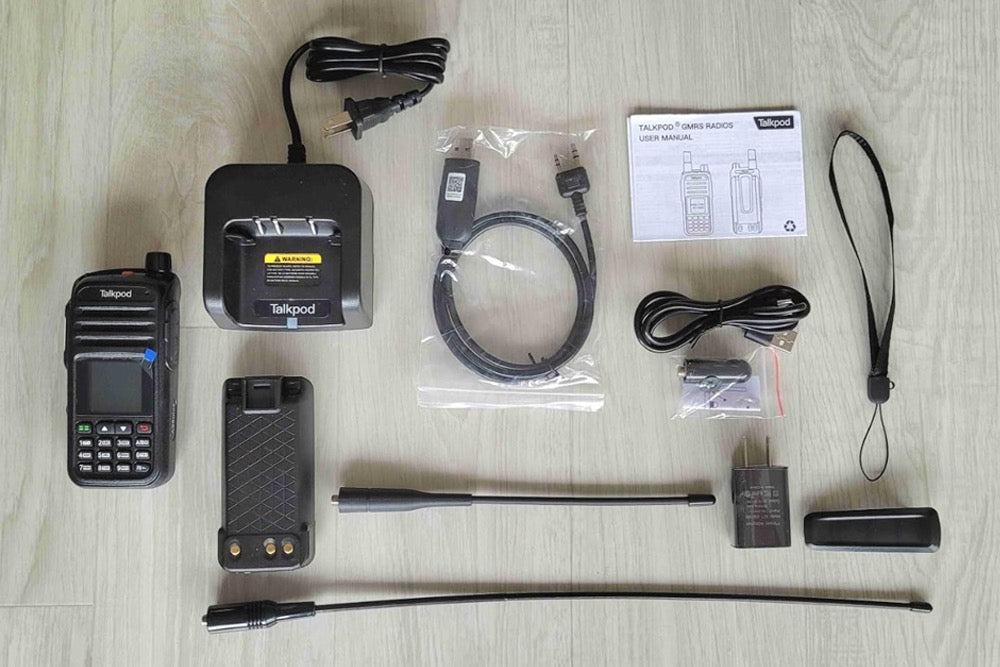
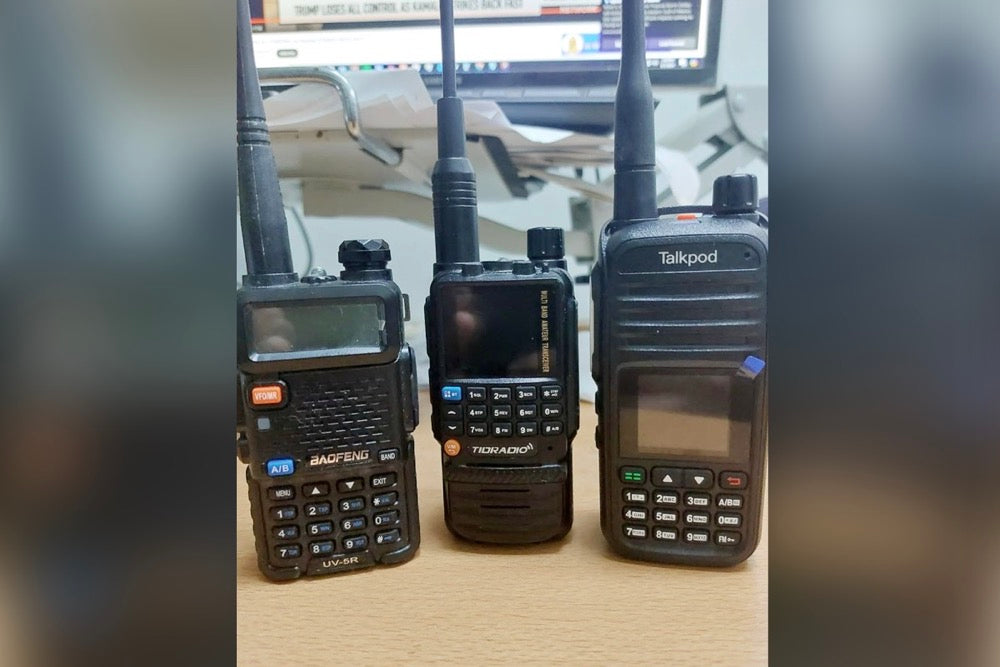
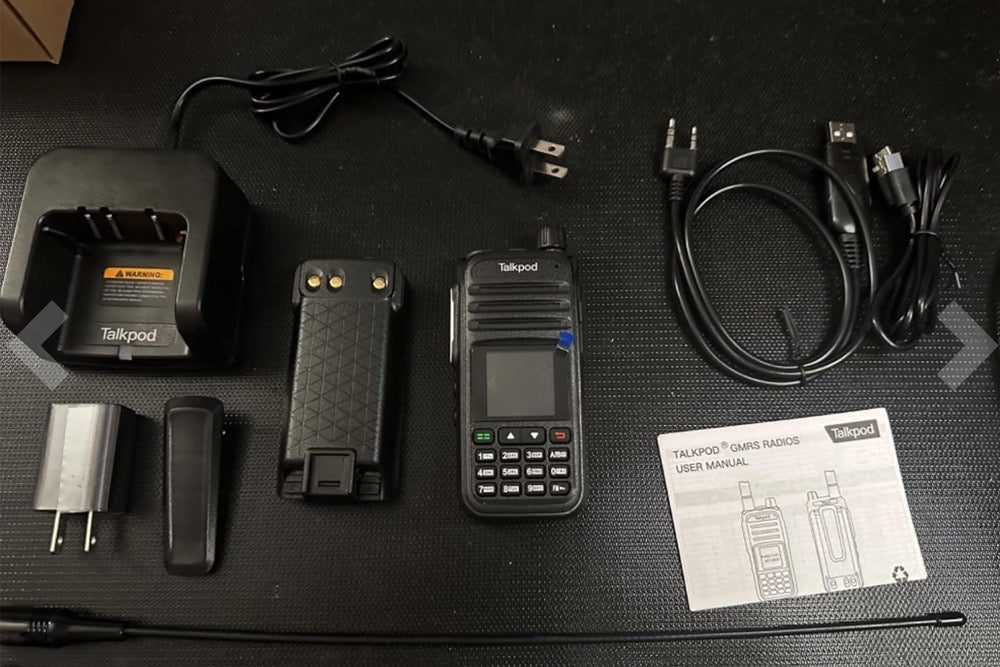
Leave a comment
This site is protected by hCaptcha and the hCaptcha Privacy Policy and Terms of Service apply.